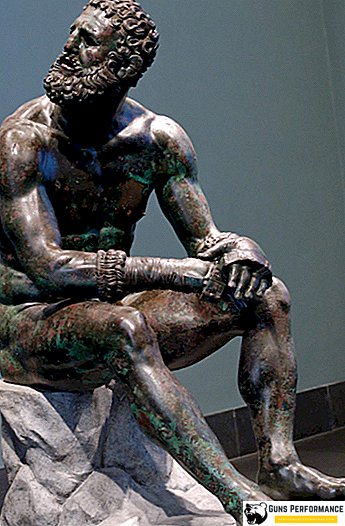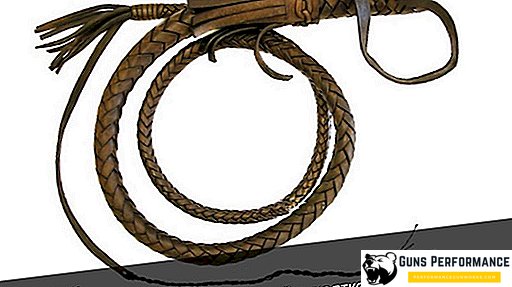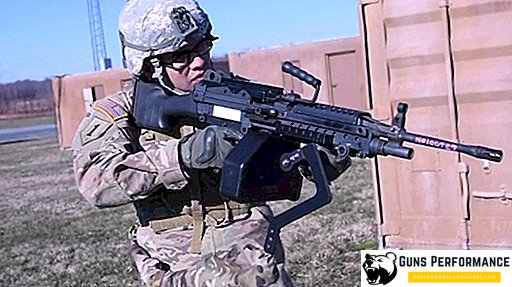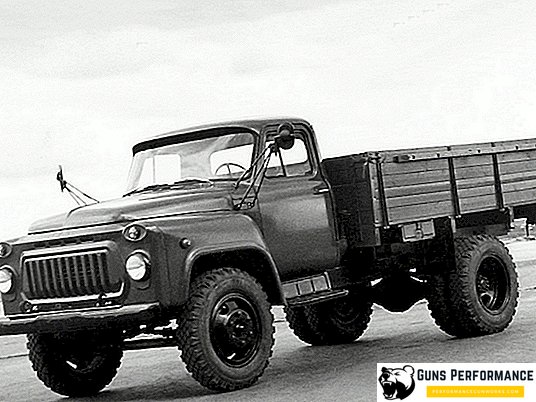
Cestus is considered to be the progenitor of modern tactical gloves with weighting and boxing gloves. Although in the case of boxing gloves, there is a paradoxical development of cestus. Instead of delivering deadly or traumatic blows, the boxing glove on the contrary softens the force of the blows, allowing you to reduce the risk of injury to a minimum. It is possible that all types of brass knuckles are also descended from the ancient cestus.
The history of the appearance of cestus

Cestus appeared in ancient Greece, although most of the surviving sources mention it in the annals of gladiatorial battles of the times of ancient Rome. However, since gladiator fights are a legacy of ancient Greek fighting schools, the cestus was known in ancient Greece. From the preserved statues of the Pancation fighters, one can see that the Greek cestus (we will call it classic) was a system of leather straps with plates that strengthen the blow. More gentle modifications of the Greeks were thoroughly refined in Rome, with the most interesting models getting iron spikes on the plates.
Causes of cestus
The history of human development is not conceivable without wars and battles. In peacetime, men sorted out relationships or honed their combat skills against each other. The techniques and strikes that allowed the opponent to win were remembered and used in subsequent battles, while the most effective ones were passed on to their children and members of the gens. With the advent of a variety of different cold weapons, the barefoot combat technique became irrelevant, and hand-to-hand combatants developed separately from the military elite. They demonstrated their techniques at the holidays, and were quite respected people.
In ancient Greece, where the cult of the human body was developed, unarmed fighting developed in two main areas:
- Fist fights - like modern boxing;
- A fight where it was impossible to use strikes.
The eternal desire of fighters to prove that their school is better led to fights between representatives of the fist and wrestling techniques. In mixed battles, a representative of each school clearly saw the flaws in his technique. The result was the study of the techniques of a competing style and their use in battles, which gave impetus to the emergence of ancient fighting without rules - the deadly martial art of Pankration.

The battles of the representatives of the Pankration school were distinguished by extreme cruelty, but were very spectacular. Wanting to give them even more entertainment, the tournament managers allowed the use of cestuses, which at that time were used in illegal fights. Greek citizens, many of whom participated in bloody clashes with the use of a large number of knives, appreciated this innovation.
How did the cestus appear
Unfortunately, the story does not reveal the secret of the appearance of cestus, but it can be assumed that it appeared as a result of the evolution of ordinary leather straps-braces, which protected the bundles from sprains. Wishing to protect the injured hands from injuries, the fighters began to wind the straps on the wrist, covering the impact surface with their fists. Some of the weaker fighters thought of weaving metal plates into the leather of the belts. And so crushing blows became fatal.

Use of cestuses in gladiatorial battles
Bloody gladiatorial battles in ancient Rome stimulated the development of cestuses in the direction of increasing damaging properties. The cestuses who were the most dangerous weapons in the warriors in Greece have become one of the most innocent weapons in Rome. Roman gladiators became famous as excellent fighters with cold weapons. Virtually every fight was fatal. To minimize losses, the lanistas (owners and mentors of gladiator schools) remembered cestuses. Having supplied them with iron spikes, it turned out to be an excellent non-lethal weapon, using which blood flowed in streams for the enjoyment of the public.
Cestus Analogs during the Middle Ages and Now
During the Middle Ages, the cestus was completely forgotten. However, there was a subject that, by its characteristics, fully corresponded to the purpose of the cestus, and also performed protective functions (which was its purpose). This is an iron knight's glove, which protected the hand from defeat by cold weapons, and served the same functions as the ancient cestus or modern brass knuckles. A blow with a massive iron glove on the face, despite the large area of touch, turned it into a bloody mess, breaking its nose and knocking out its teeth.
Currently, there are many models of tactical gloves, which do not so much protect the hands from damage, but make the punch heavier. In some models, a lead plate or shot is sewn in the area of the impact surface. Many models have anatomical cast protector. Often, Kevlar is used in their production, which protects hands from knife cuts. Thus, modern tactical gloves are a symbiosis of cestus and knight's gloves, adapted to modern tasks and goals.

Now the cestus has given way in the battle arena to its more modern descendants. A system similar to cestus was encountered during the USSR, when the belt was wound around the arm and beaten with a badge. Although the combat technique with a soldier's belt more resembled the work with flexible weapons, however, sometimes it was completely wound around the arm to protect it from the knife.













